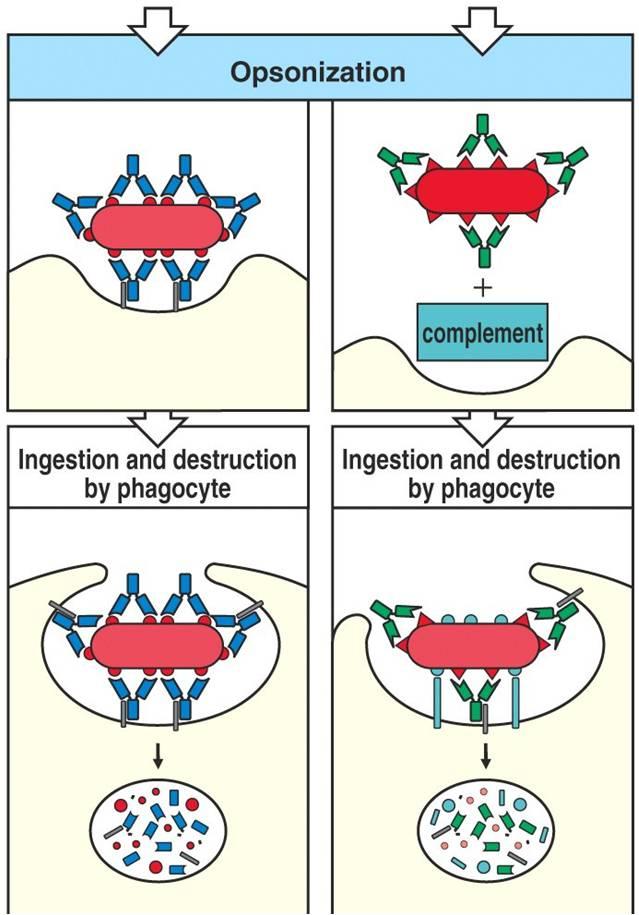Makindo Medical Notes"One small step for man, one large step for Makindo" |
|
|---|---|
| Download all this content in the Apps now Android App and Apple iPhone/Pad App | |
| MEDICAL DISCLAIMER: The contents are under continuing development and improvements and despite all efforts may contain errors of omission or fact. This is not to be used for the assessment, diagnosis, or management of patients. It should not be regarded as medical advice by healthcare workers or laypeople. It is for educational purposes only. Please adhere to your local protocols. Use the BNF for drug information. If you are unwell please seek urgent healthcare advice. If you do not accept this then please do not use the website. Makindo Ltd. |
Opsonisation
-
| About | Anaesthetics and Critical Care | Anatomy | Biochemistry | Cardiology | Clinical Cases | CompSci | Crib | Dermatology | Differentials | Drugs | ENT | Electrocardiogram | Embryology | Emergency Medicine | Endocrinology | Ethics | Foundation Doctors | Gastroenterology | General Information | General Practice | Genetics | Geriatric Medicine | Guidelines | Haematology | Hepatology | Immunology | Infectious Diseases | Infographic | Investigations | Lists | Microbiology | Miscellaneous | Nephrology | Neuroanatomy | Neurology | Nutrition | OSCE | Obstetrics Gynaecology | Oncology | Ophthalmology | Oral Medicine and Dentistry | Paediatrics | Palliative | Pathology | Pharmacology | Physiology | Procedures | Psychiatry | Radiology | Respiratory | Resuscitation | Rheumatology | Statistics and Research | Stroke | Surgery | Toxicology | Trauma and Orthopaedics | Twitter | Urology
Opsonization is a crucial process in the immune system that enhances the ability of phagocytes to recognize, engulf, and destroy pathogens. It involves the coating of pathogens with molecules called opsonins, which facilitate their binding to phagocyte receptors.
Key Components of Opsonization
- Opsonins :
- Molecules that bind to the surface of pathogens and enhance their uptake by phagocytes.
- Common opsonins include antibodies (IgG) and complement proteins (C3b).
- Phagocyte Receptors :
- Receptors on phagocytes that recognize and bind to opsonins on the surface of pathogens.
- Key receptors include Fc receptors (FcRs) for antibodies and complement receptors (CRs) for complement proteins.

Mechanism of Opsonization
- Recognition and Binding :
- Pathogens are coated with opsonins such as antibodies or complement proteins.
- Phagocytes recognize these opsonins through their specific receptors.
- Engulfment :
- The binding of opsonins to phagocyte receptors triggers the engulfment of the pathogen.
- Phagocytes extend their membrane around the pathogen, forming a phagosome.
- Digestion :
- The phagosome fuses with a lysosome to form a phagolysosome.
- Digestive enzymes and reactive oxygen species within the phagolysosome destroy the pathogen.
Types of Opsonins
- Antibodies :
- IgG antibodies are the most effective opsonins.
- Fc region of IgG binds to Fc receptors on phagocytes, facilitating phagocytosis.
- Complement Proteins :
- C3b is the primary complement protein that acts as an opsonin.
- C3b binds to complement receptors (CR1) on phagocytes, enhancing their ability to phagocytose pathogens.
- Acute Phase Proteins :
- Proteins such as C-reactive protein (CRP) can also act as opsonins.
- CRP binds to phosphocholine on the surface of pathogens and dead cells, facilitating their clearance by phagocytes.
Role in the Immune Response
- Enhanced Phagocytosis :
- Opsonization significantly increases the efficiency of phagocytosis.
- Phagocytes can more easily recognize and bind to opsonized pathogens.
- Pathogen Clearance :
- Opsonization promotes the rapid clearance of pathogens from the body.
- Reduces the load of infectious agents and limits their spread.
- Activation of Complement System :
- Opsonins like C3b are part of the complement system, which helps in directly lysing pathogens and recruiting additional immune cells.
- Immune Complex Clearance :
- Opsonization helps in the clearance of immune complexes, preventing their deposition in tissues and subsequent inflammation.
Clinical Significance
- Infections :
- Deficiencies in opsonins or phagocyte receptors can lead to increased susceptibility to infections.
- Understanding opsonization mechanisms can aid in developing treatments for infections, including immunotherapies.
- Autoimmune Diseases :
- Autoantibodies can act as opsonins, leading to the phagocytosis of healthy cells and contributing to autoimmune diseases.
- Therapeutic Applications :
- Therapies that enhance opsonization, such as intravenous immunoglobulins (IVIG), can be used to treat immunodeficiency disorders and some autoimmune diseases.
Summary
Opsonization is a key process in the immune system that enhances the ability of phagocytes to recognize and destroy pathogens. It involves the coating of pathogens with opsonins, such as antibodies and complement proteins, which bind to specific receptors on phagocytes. This process facilitates the engulfment and digestion of pathogens, promoting their rapid clearance and limiting infection. Opsonization plays a crucial role in both innate and adaptive immunity and has significant clinical implications for infections, autoimmune diseases, and therapeutic applications.